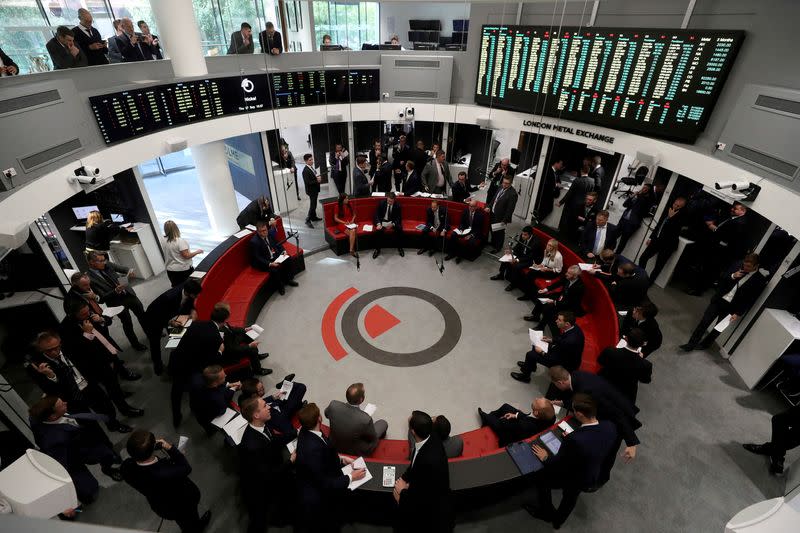Explainer-LME nickel surge puts clearing houses in the spotlight

By Huw Jones
LONDON (Reuters) - The London Metal Exchange (LME) took emergency measures on March 8, 2022 to halt nickel trading as prices doubled to more than $100,000 a tonne.
The surge was blamed on short-covering by major nickel producer China's Tsingshan, owned by Chinese tycoon Xiang Guangda, which held large short positions. Its buying helped spur the explosive price rise.
U.S.-based hedge fund Elliott Associates and market maker Jane Street Global Trading say the LME unlawfully cancelled trades made on March 8, 2022. They are seeking a combined $472 million damages.
The judicial review of the LME's decision to cancel trades started on Tuesday. If the exchange were found to be at fault, a second trial would be held to decide on compensation.
WHAT IS A CLEARING HOUSE?
A clearing house is a critical part of the financial market's basic plumbing, standing between the buyer and seller to take on the risk if one side of the trade defaults.
The world's biggest clearing houses handle trillions of dollars of transactions annually in stocks, bonds, derivatives and metals. They include LCH, part of the London Stock Exchange Group, ICE Clear and CME Clear.
Clearing houses have grown since the global financial crisis, as regulators have forced more financial transactions to be backed by clearers.
Critics have said clearing houses, rather than banks, have now become "too big to fail", meaning taxpayers might have to bail out one that went bust, in order to avoid contagion through their myriad connections across financial markets.
Clearers have had to reinforce their defences so they can cope if their two biggest members, usually banks, go bust at the same time.
Regulators also monitor the models clearers use to determine how much margin - a type of insurance payment - is needed. They want to insure the margin is not being pegged at too low a level just to attract business.
Global regulators have conducted stress tests on the world's five biggest clearing houses, which showed they had enough capital on hand to handle a significant increase in volatility.
WHY DOES MARGIN MATTER?
Members of a clearing house must post collateral such as treasuries or cash as "insurance" against potential losses or default in their positions. This margin payment moves along with the price of the asset or contract.
LCH increased margins on some government debt during the euro zone debt crisis. Some governments said this step was aggravating the crisis.
In stressed markets, however, it can be difficult for some participants to raise enough cash or collateral at short notice to meet the margin call.
After nickel prices surged, the Bank of England forced the LME's clearing arm to double its default fund.
In March this year, the BoE set out changes LME Clear had to make to address shortcomings in governance, management and risk management, and to increase the independence of how the unit is operated.
CAN CLEARING HOUSES GO BUST?
They can, but it is rare given there are several safety nets.
Actual failures include a clearing house in France in 1974, in Malaysia in 1983 and in Hong Kong in 1987.
But when LCH unwound Lehman Brothers' $9 trillion interest rate swaps portfolio during the global financial crisis, it used up only about a third of the margin at hand, meaning neither LCH nor its members suffered losses from closing Lehman's positions.
Nasdaq Clearing was fined about $36 million pounds over the default of a Norwegian power trader Einar Aas in 2018 which showed deficiencies in the clearer's operations.
But although the margin on hand was too little at that time, the remaining loss was covered by tapping Nasdaq Clearing's own capital and the clearers default fund, to which all members had contributed.
(Reporting by Huw Jones; Editing by David Gregorio)

